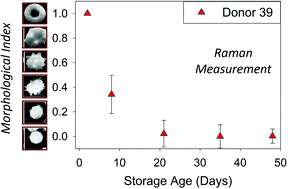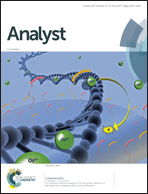Using Raman spectroscopy to assess hemoglobin oxygenation in red blood cell concentrate: an objective proxy for morphological index to gauge the quality of stored blood?
Abstract
Blood banking is an essential aspect of modern medical care. When red blood cells (RBCs) are stored, they become damaged by various chemical processes, such as accumulation of their own waste products and oxidative injury, among others. These processes lead to the development of the RBC storage lesion, a complex condition where the severity is reflected through the morphology of the stored cells. It was hypothesized that Raman spectroscopy could be used to monitor certain structural and compositional changes associated with such ageing effects and that a relationship between these features and traditional morphology (as measured using a morphology index) could be observed. The hypothesis was tested by measuring spectral features associated with hemoglobin oxygenation from dry-fixed smears and liquid RBCs for twenty-nine different donors (combined), and comparing the trends with morphological scoring from seven of these donors. After appropriately fitting the two data sets to either power or linear curves, the oxygenation state was shown to change in a manner that was donor-dependent and that closely tracked morphological changes. This study suggests Raman analysis has promise for providing a rapid and objective measure of the cell quality of stored RBCs through measurements of hemoglobin oxygenation that is comparable to traditional morphological assessment.



 Please wait while we load your content...
Please wait while we load your content...